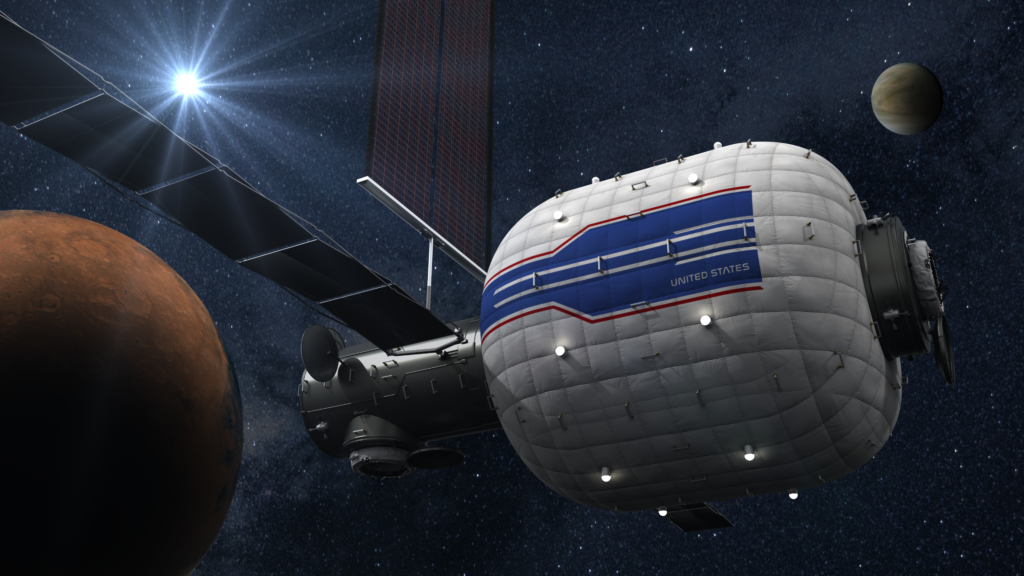Preparing Habitats for Deep-Space Exploration, featuring Matt Simon
“It’s kind of like building a house for a place no one has ever lived before. You have a general idea of what it will be like, but you have to really think about the risks and how to protect the crew against them.” In addition to supplying a pressurized environment to independently support crew living and working, a space habitat has to meet the challenge of keeping them happy and healthy. Habitat design lead Matt Simon works to address those challenges across deep-space habitat design concepts, always pushing to improve usability, address risks, and reduce mass while maintaining functionality and meeting crew needs.
Simon, an aerospace engineer with the Space Mission Analysis Branch at the NASA Langley Research Center in Hampton, VA, started working on habitation when his research group assigned him to be “the habitat person.” Fortunately, that worked out great for Simon as he found he loved the interdisciplinary nature of habitat design, collaborating with psychologists, doctors, physiologists, scientists, and engineers, among many other subject matter experts. This led to his PhD research project to develop a tool to design habitat interiors.

“Being able to work on how to live on other planets is super cool! … We figure out how to do incredible things as part of NASA.”
After joining NASA to work on lunar habitation, Simon expanded to also study habitats for Mars and asteroid mission concepts. Currently, he is working on the design for a Mars Transit Habitat, a vehicle that will house the crew on their way to and from Mars. Differences in the mission destination drive differences in the habitat design considerations. “It’s not like the International Space Station (ISS); we’re planning for a situation where there will be no ability to resupply during the mission. Think about having to bring two to three years of goods, food, and toilet paper, and having to pack it into your house. There’s also no abort. On ISS, if there’s a problem, you can evacuate until the problem is fixed. You won’t be able to do that on a Mars Transit Habitat. You’re going to have to design it to be self-sufficient. As a third thing, there is a communication delay, up to twenty minutes each way, so you can’t always rely on mission control like on ISS. You have to design systems to handle emergencies.”

Simon’s role is to design these Transit Habitat concepts at a high level, conducting trade studies to look at the design and features and how they impact the overall performance. Working with a team of people from multiple NASA centers, Simon helps define the ground rules and assumptions that form the basis for a habitat concept, utilizing his experience with interior design, radiation shielding, and crew health to refine the requirements and needed features to keep the crew happy, healthy, and productive. These requirements and associated lessons learned are then passed to commercial partners to inform their designs, and Simon works with those partners to answer their questions to help them refine their designs to meet the NASA requirements. “I came to the realization that ninety-nine percent of the stuff I design will never be built, but ninety-nine percent of the bad designs that come across our desk will not be used.”
So what is the importance of this conceptual work? “Part of our direction and strategy right now is to go to the Moon and use that as a testing ground for going to Mars. All of that helps to advance technologies we can use in our daily lives as well as on future missions. It also helps us to understand how the human body works and how we can live in more extreme environments. Our conceptual work allows for the development of habitats for the Moon or Mars that are lower risk and more affordable… We are able to inform Agency leaders and influence the direction of the designs.”
As Simon sees it, habitation work allows him to work with brilliant people from many different disciplines, which keeps things interesting and him learning. “Being able to work on how to live on other planets is super cool! Learning how to live off-world and be a part of those steps—I’ve grown to really love it. We figure out how to do incredible things as part of NASA.”
Author/Contact: Emily Judd
Published: September 2021









